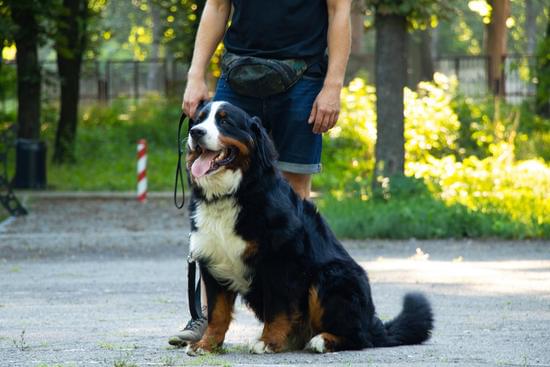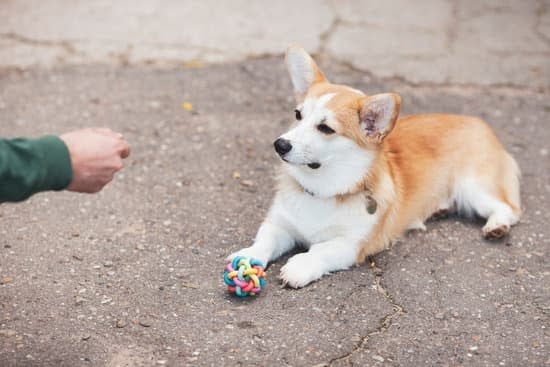Training your dog is an essential part of responsible pet ownership. Not only does it teach them important skills and commands, but it also has numerous benefits for their behavior and overall well-being. In this article, we will guide you through the process of training your dog in just 2 weeks, providing you with a comprehensive plan to achieve success.
The impact that training can have on a dog’s behavior is profound. By teaching them obedience commands and boundaries, they become more predictable and easier to manage. Training also helps to prevent behavioral issues from developing or worsening, creating a harmonious environment for both you and your furry friend. Additionally, a well-trained dog tends to be happier and more confident, as they understand what is expected of them and can participate in various activities alongside their owners.
Setting realistic goals is crucial when embarking on a 2-week training plan. While it may not be realistic to expect your dog to become perfectly trained in such a short span of time, there are specific goals that can be achieved within this timeframe. Understanding the importance of setting achievable objectives will help you stay focused throughout the training process and increase your chances of success.
By following a structured training schedule, consistency can be maintained which enhances the learning process for your dog. We will provide tips on how to incorporate training sessions into your daily routine effectively so that practice becomes a habit for both you and your canine companion. Through consistent training efforts, you will not only see improvements in their behavior but also strengthen the bond between you two.
Setting Realistic Goals for Your 2-Week Training Plan
When embarking on a 2-week training plan for your dog, it is essential to set realistic goals. Having clear and attainable objectives will not only help you stay focused but also increase the likelihood of success in training. Here are some key points to consider when setting goals for your training plan.
Identifying Specific Training Goals:
Before you begin your 2-week training plan, it is important to identify the specific behaviors or commands that you wish to train your dog. This could include basic obedience commands such as sit, stay, and come, as well as addressing behavioral issues like excessive barking or jumping. By pinpointing these goals, you can tailor your training sessions accordingly and measure your progress more effectively.
Understanding the Importance of Realistic Expectations:
It’s crucial to have realistic expectations when it comes to dog training. While some dogs may be quick learners and exhibit significant progress within a short span of time, others may require more time and patience. Recognizing the individuality of each dog and their unique learning capabilities will help prevent frustration and disappointment in the training process.
Sub-section: Breaking Down Goals into Smaller Steps
To make your goals more attainable, it can be helpful to break them down into smaller steps. For instance, if you want to teach your dog the “sit” command, start by rewarding them for simply bending their knees slightly. Gradually shape their behavior by requiring them to lower their rear end until they achieve a full sit position. Breaking down complex tasks into bite-sized steps makes training more manageable for both you and your dog.
Sub-section: Tracking Progress
To keep track of your progress throughout the two weeks, consider maintaining a log or journal. Note down any successes or challenges encountered during each training session. Documenting insights about what techniques work best for specific behaviors can guide future training sessions and refine your approach over time.
By setting realistic goals for your 2-week training plan, you will be better equipped to train your dog effectively while maintaining motivation and enthusiasm. Remember that patience, consistency, and understanding the individuality of your dog’s learning capabilities are key components of successful training. With a well-planned approach and clear objectives in mind, you’ll be on your way to building a strong foundation for continued training and a harmonious relationship with your furry friend.
Creating a Training Schedule
Designing a structured training routine is crucial to the success of your dog’s training. Consistency is key when it comes to training, and having a schedule helps ensure that you allocate dedicated time for training sessions. Here are some tips on creating an effective training schedule for your dog:
- Determine the frequency and duration: Decide how often you will have training sessions with your dog and how long each session will be. For example, you may choose to have two 15-minute sessions per day or one longer session of 30 minutes.
- Choose the best time: Consider your dog’s energy levels and find a time when they are most alert and receptive to training. Avoid scheduling training sessions right before or after meals or when your dog is tired.
- Be consistent: Stick to your chosen schedule as closely as possible. Dogs thrive on routine, so having consistent training times will help them understand what is expected of them.
- Incorporate training into daily activities: Training doesn’t always have to be separate from your everyday life. You can integrate short training exercises into other activities like walks or playtime.
- Mix it up: While sticking to a schedule is important, it’s also beneficial to vary the types of exercises and commands you work on during each session. This keeps your dog engaged and prevents them from getting bored.
Having a well-structured training schedule gives both you and your dog clear expectations and ensures that you consistently devote time for their development. Remember, patience is key during the training process; progress may not be immediate, but with perseverance and consistency, you’ll start seeing positive results in no time.
Building a Strong Bond with Your Dog
Establishing a strong bond with your dog is essential for effective training. When you have a strong connection with your furry friend, they are more likely to trust and respect you, making it easier to teach them new behaviors and commands. Building this bond also contributes to your dog’s overall well-being and happiness. Here are some techniques for fostering a positive and trusting relationship with your four-legged companion:
- Spend Quality Time Together: Just like any relationship, spending quality time with your dog is crucial for building a strong bond. Set aside dedicated time each day for activities that you both enjoy, such as walks, playtime, or even snuggling on the couch. This one-on-one interaction helps strengthen the connection between you and your dog.
- Use Positive Reinforcement: Positive reinforcement is not only an effective training technique but also helps build trust and strengthen the bond between you and your dog. Reward them with treats, praise, or toys when they exhibit desirable behavior or follow commands correctly. This positive feedback creates a positive association between training sessions and their relationship with you.
- Understand Their Needs: To build a strong bond with your dog, it is important to understand their needs and provide for them accordingly. Whether it’s regular exercise, mental stimulation through interactive toys or puzzles, or proper nutrition, meeting their physical and emotional needs shows that you care about their well-being.
| Technique | Description |
|---|---|
| Spend Quality Time Together | Set aside dedicated time each day for activities that you both enjoy. |
| Use Positive Reinforcement | Reward them when they exhibit desirable behavior or follow commands correctly. |
| Understand Their Needs | Provide for their physical and emotional needs. |
Basics of Obedience Training
Obedience training is a fundamental aspect of training your dog. It involves teaching your dog essential commands such as sit, stay, and come. These basic commands lay the foundation for more advanced training and can significantly improve your relationship with your furry friend. In this section, we will provide step-by-step instructions on how to train each command effectively.
One of the first commands you should teach your dog is “sit.” Start by holding a treat close to their nose and then move it upwards, causing their head to follow the treat. As their head moves upward, their bottom will naturally lower into a sitting position. Once they are in a seated position, say “sit” and give them the treat as a reward. Repeat this process several times until they understand the command.
Next, we have the “stay” command. Begin by having your dog sit or stand in front of you. Hold your hand up in front of their face with your palm facing towards them and say “stay.” Take a step back and wait for a few seconds before returning to them and rewarding them with praise or a treat. Gradually increase the duration of time that they need to stay in place before giving them the reward.
Another important command is “come.” Start by kneeling down and opening your arms while saying “come” in an enthusiastic tone. If needed, you can use treats or toys to encourage them to come towards you. When they reach you, reward them with praise or a treat. Practice this command both indoors and outdoors to ensure that they understand it in different environments.
Remember that consistency is key when training your dog in obedience commands. Practice these commands daily in short sessions to keep their skills sharp and reinforce what they have learned. Be patient with your furry friend during this process, as learning new commands may take time.
By mastering these basic obedience commands, you will not only enhance communication with your dog but also establish yourself as a strong and capable leader. These commands are the building blocks for further training and will help ensure that your dog is well-behaved and responsive to your instructions.
Addressing Behavioral Issues
Behavioral issues can be a common challenge that many dog owners face. Whether it’s excessive barking, jumping on people, or pulling on the leash during walks, these behaviors can be frustrating and disruptive. However, with the right techniques and understanding, you can effectively address and overcome these issues during your two-week training plan.
To tackle behavioral problems, it is important to first identify their underlying causes. Some dogs may exhibit negative behaviors due to fear, anxiety, or a lack of socialization. By diagnosing the root cause of the behavior, you can develop a targeted training approach to address it.
One effective strategy for addressing behavioral issues is positive reinforcement. Instead of focusing solely on correcting the unwanted behavior, redirect your attention to rewarding and reinforcing desired behaviors. For example, if your dog tends to bark excessively when guests arrive at your home, teach them an alternative behavior such as “go to your bed” or “sit quietly.”
When they successfully follow these commands instead of barking, praise them and offer treats as a reward. This will help your dog associate positive experiences with alternative behaviors.
It’s also important to understand that consistency is key in addressing behavioral issues. Establish clear boundaries and rules for your dog and consistently reinforce them. Ensure that all family members are on the same page when it comes to training expectations and consistently enforce them.
While many behavioral issues can be addressed through consistent training and positive reinforcement, there may be instances where seeking professional help from a dog trainer is necessary. If you find yourself struggling or unable to make progress with certain behaviors despite efforts to train your dog yourself, don’t hesitate to reach out for professional assistance. A qualified trainer can provide expert guidance tailored specifically to your dog’s needs.
By addressing behavioral issues during your two-week training plan, you are not only improving your dog’s behavior but also enhancing their overall well-being and quality of life. Remember that each dog is unique, and some behaviors may take longer to address than others. Stay patient, consistent, and focused on building a positive relationship with your furry friend.
Positive Reinforcement Techniques
In the process of training your dog, one of the most effective methods to encourage desired behaviors is through positive reinforcement. Positive reinforcement involves rewarding your dog for exhibiting the behavior you want to reinforce, making them more likely to repeat it in the future. This technique not only helps in shaping your dog’s behavior but also strengthens your bond with them.
- Using Treats: One popular form of positive reinforcement is using treats as rewards. When teaching your dog a new command or trick, keep small bite-sized treats handy. For example, when teaching your dog to sit, hold a treat close to their nose and gradually lift it upward while giving the verbal command “sit.” Once they sit successfully, immediately give them the treat and praise them with enthusiastic words and petting.
- Praise and Affection: Dogs crave our attention and affection, so using praise and physical affection as rewards can also be highly effective. When your dog follows a command correctly or behaves well, lavish them with verbal praise like “good boy/girl” or “well done.” Additionally, petting and gentle strokes on their back can further reinforce their good behavior.
- Clicker Training: Clicker training is another positive reinforcement technique that relies on associating the sound of a clicker with reward. Start by introducing your dog to the clicker by clicking it each time they perform a desired action or behavior correctly. Immediately follow up with a treat or praise. Eventually, your dog will associate the sound of the clicker with receiving a reward and will understand that they have performed correctly.
- Rewards Beyond Treats: While treats are often effective rewards, they should not be relied upon exclusively. Mix things up by occasionally using other rewards such as their favorite toy or access to activities they enjoy like going for a walk in the park or playing fetch.
Remember, when using positive reinforcement techniques:
- Be timely: Offer rewards immediately after your dog exhibits the desired behavior.
- Be consistent: Use the same rewards and praise each time to reinforce consistency.
- Be patient: Some dogs may learn faster than others, so be patient and adjust your expectations accordingly.
By utilizing positive reinforcement techniques, you can create a positive learning environment for your dog, making their training experience enjoyable and rewarding. These techniques not only shape your dog’s behavior but also foster a strong bond between you and your furry friend.
Consistency and Patience
Consistency and patience are two essential elements in successful dog training. Whether you are teaching your dog basic obedience commands or addressing behavioral issues, maintaining consistency in your training methods is crucial. Dogs thrive on routine and repetition, so it is important to establish a consistent training schedule and stick to it.
Consistency begins with setting clear expectations for your dog’s behavior. For example, if you are teaching your dog the command “sit,” make sure everyone in the household uses the same cue and expects the same response from the dog. Inconsistency can confuse your dog and hinder their progress in learning new behaviors.
Another aspect of consistency is enforcing rules consistently. If you allow certain behaviors sometimes but not others, your dog will become confused about what is expected of them. It is important to be firm but fair in your expectations and reinforce them consistently.
Patience is equally important when it comes to training your dog. Remember that dogs learn at their own pace, and some may pick up new behaviors quickly while others may take more time. It is crucial to remain patient and avoid becoming frustrated or angry with your dog during the training process.
Maintaining a positive attitude and providing encouragement along the way will help create a positive association with training for both you and your furry friend. Celebrate small victories and progress made, even if it seems like a minor achievement.
| Consistency | Patience |
|---|---|
| – Establishing clear expectations | – Remaining patient throughout the process |
| – Enforcing rules consistently | – Avoiding frustration or anger |
| – Creating a positive association with training | – Celebrating small victories |
By practicing consistency and patience in your training approach, you can build a strong foundation for effective communication and obedience with your dog. Remember that building a well-trained dog takes time and effort, but the rewards are well worth it. A well-behaved and obedient dog can bring immense joy and strengthen the bond between you and your furry companion.
Troubleshooting and Seeking Professional Help
Troubleshooting Difficulties
During the training process, it is not uncommon to encounter difficulties or roadblocks along the way. This section will provide some advice on how to troubleshoot common challenges that may arise during your dog’s training.
Firstly, it is important to assess whether the difficulty lies with your training techniques or if there are other factors responsible for the setback. For example, if your dog has suddenly become unresponsive to commands they previously understood, it may be worth ruling out any underlying health issues by consulting with a veterinarian.
If you have determined that the issue is indeed related to the training process itself, consider modifying your approach. Perhaps your dog responds better to different types of rewards or requires shorter training sessions rather than longer ones. It may also be helpful to revisit and reinforce basic commands before moving on to more complex ones.
Seeking Professional Assistance
If you find yourself struggling to make progress despite troubleshooting efforts, it can be beneficial to seek professional help from a dog trainer. A professional trainer can provide valuable guidance and expertise in addressing specific issues and tailoring a training plan that suits both you and your canine companion.
When choosing a trainer, look for someone who uses positive reinforcement techniques and has experience working with dogs similar to yours. Recommendations from friends, family, or veterinarians can also be useful in finding a reputable trainer.
Professional trainers can offer personalized attention and support throughout your dog’s training journey, ensuring that any behavioral problems are properly addressed while fostering a positive learning environment for your pet.
Remember that seeking professional help does not mean you have failed as a dog owner. Rather, it demonstrates your commitment to providing the best care possible for your furry friend and shows that you are willing to invest time and effort into their well-being.
Celebrating Your Successes
The Importance of Recognizing Achievements
After two weeks of dedicated training, it is important to take a moment to recognize and celebrate the successes you and your dog have achieved. Training a dog can be challenging at times, but every small victory deserves acknowledgment. By celebrating your achievements, you are not only reinforcing positive behaviors in your dog, but you are also boosting your own motivation and satisfaction as a trainer.
Recognizing successes can come in various forms. It could be when your dog finally masters a difficult command or when they exhibit improved behavior in certain situations. By setting realistic goals for your training plan, you can identify specific milestones that deserve celebration. Remember that progress is not always linear, so even small steps forward should be acknowledged and celebrated.
Ways to Celebrate
There are numerous ways to celebrate the successes of your training journey with your dog. The key is to find what motivates both you and your canine companion. Here are some ideas:
- Treats and Rewards: Consider using their favorite treats or toys as rewards for achieving training goals. This not only reinforces their positive behavior but also makes them associate success with something they enjoy.
- Praise and Affection: Dogs thrive on verbal praise and physical affection from their owners. Shower your furry friend with lots of praise, belly rubs, or cuddles when they accomplish a milestone during training.
- Fun Activities: Plan activities that allow you to bond further with your well-trained dog while having fun together. It could be taking them on an extra-long walk or playing their favorite game in the park as a reward for their hard work.
- Share Your Success: Share photos or videos of your dog’s progress on social media platforms dedicated to dogs or among family and friends who have been supporting you throughout the training process. Sharing these moments will allow others to join in celebrating the achievements alongside you.
Continuing the Journey
While celebrating your successes is important, it is equally crucial to remember that training your dog is an ongoing process. The two-week timeframe is just the beginning of building a lifelong relationship with a well-trained dog. Use the celebration as a springboard to keep improving and strengthening your bond with your furry friend.
Continue practicing the commands and behaviors they have learned, and always be open to learning new techniques or addressing any future behavioral issues that may arise. Remember that training should be an enjoyable experience for both you and your dog, so make sure to maintain a positive atmosphere throughout the journey.
By celebrating your successes and staying committed to continuous improvement, you are setting yourself up for a rewarding and fulfilling relationship with your well-trained dog for years to come.
Conclusion
Training your dog in just 2 weeks can have a lasting impact on their behavior and overall well-being. By setting realistic goals, creating a training schedule, building a strong bond, mastering obedience commands, addressing behavioral issues, and using positive reinforcement techniques, you can achieve great results in a short amount of time.
However, the journey doesn’t end after the initial 2 weeks. It is important to continue training and nurturing your relationship with your well-trained dog for a lifelong companionship.
Throughout this article, we have discussed the numerous benefits of training your dog. Training not only helps improve their behavior but also enhances their mental stimulation and physical exercise. A well-trained dog is happier, healthier, and more confident in their surroundings. By investing time and effort into their training, you are ultimately providing them with a better quality of life.
As we conclude this guide on how to train your dog in 2 weeks, it is essential to remember that training is an ongoing process. The two-week period serves as a foundation to build upon. Take pride in the progress made during these initial weeks but understand that there will always be room for improvement and continued growth between you and your four-legged companion.
So, whether you are embarking on basic obedience training or addressing specific behavioral issues, remain motivated and committed. Consistency and patience are key throughout the training process. Celebrate every small victory along the way and seek professional help when needed. With dedication and love, you can forge a lifelong relationship with your well-trained dog that both of you will cherish for years to come.
Remember that the ultimate goal is not just to train your dog but to build a deep bond based on trust, respect, and understanding. Enjoy this journey together as you continue to nurture your relationship with your furry friend beyond the initial 2 weeks of training.
Frequently Asked Questions
Is it possible to train a dog in 2 weeks?
Training a dog in just two weeks can be challenging, but it is possible to make significant progress within this timeframe. The key to successful training in such a short period lies in focusing on essential commands and behaviors while using consistent and positive reinforcement techniques. It is important to set clear goals and prioritize what you want to teach your dog during these two weeks.
Keep the training sessions short and frequent, ensuring they are engaging and rewarding for your dog. Remember that training is an ongoing process, so even if your dog cannot learn everything in two weeks, you can establish a good foundation for further development.
What is the fastest way to train a dog?
The fastest way to train a dog involves utilizing positive reinforcement methods coupled with consistency and patience. Dogs respond well to rewards such as treats, praise, or playtime when they exhibit desirable behaviors or obey commands correctly. Consistency plays a crucial role, as setting clear boundaries and using the same cues consistently helps the dog understand expectations more quickly.
Frequent short training sessions throughout the day can also expedite the learning process by keeping the lessons fresh in your dog’s mind. It’s important to avoid punishment-based training methods that may cause fear or anxiety in your furry friend.
How do you train a puppy in 2 weeks?
Training a puppy in just two weeks requires focus and dedication during this relatively short time frame. Start by establishing a predictable routine that includes designated times for feeding, bathroom breaks, exercise, playtime, and training sessions appropriate for their age and attention span.
Prioritize basic commands like sit, stay, come, and leave it while gradually introducing socialization skills with dogs, people, and new environments.

Welcome to the blog! I am a professional dog trainer and have been working with dogs for many years. In this blog, I will be discussing various topics related to dog training, including tips, tricks, and advice. I hope you find this information helpful and informative. Thanks for reading!





